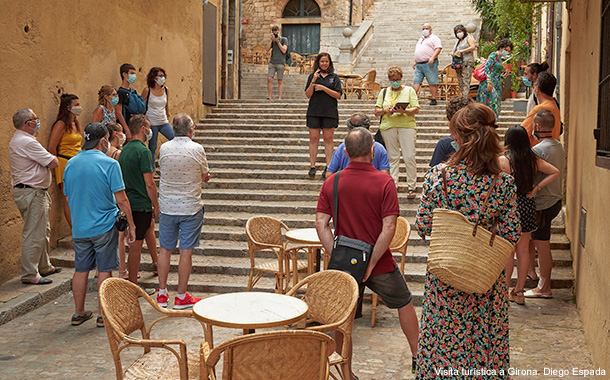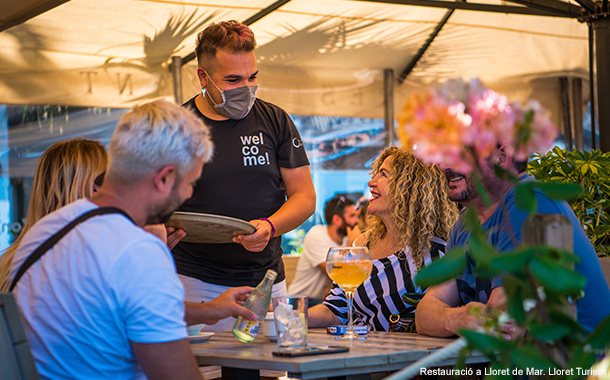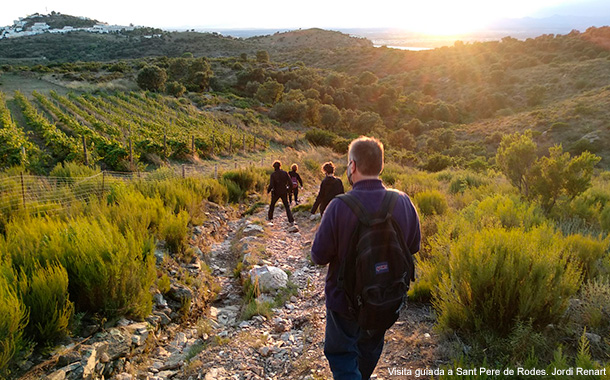Tourism figures for 2020
In 2020 the province of Girona received 3,346,055 tourists, who generated 10,037,448 overnight stays.
It is safe to say that 2020 was the worst tourist season ever, due to the global health and economic crisis caused by COVID-19. Fear of travelling, restrictions on mobility and border closures, lockdowns and quarantines, the forced halt of economic activity, the implementation of health and safety measures and fluctuating uncertainty have all had a direct negative impact on global tourist activity.
According to data from the Observatory of the Eurecat Foundation’s Department of Tourism Innovation, in 2020 the province of Girona received 3,346,055 tourists, 57.7% less than in 2019, and these visitors generated 10,037,448 overnight stays, a drop of 61.2% from the previous year.
By tourism brands, the Costa Brava registered 2,778,358 tourists (58.9% less than in 2019), who generated 8,835,562 overnight stays (62.4% lower than the previous year). The Girona Pyrenees received 567,697 tourists (a reduction of 50.2% compared with 2019), who generated 1,201,886 overnight stays (down 49.4% from the previous year).
In 2020, the province of Girona had 265,704 places available in regulated tourist accommodation divided among hotels, apartments, campsites and rural tourism establishments, which had an average overall occupation level of just 27%. The tourist season was cut dramatically short, covering only 275 nights of operation due to the complete closure of accommodation establishments between 16 March and 15 June 2020. As a result, the number of overnight stays on the Costa Brava was slashed by almost two-thirds, with the foreign market being most directly hit, with figures plummeting by 82.1%. In the Girona Pyrenees overnight stays were halved, with a drop of 70% in both the international and rest-of-Spain markets. August was the period when most overnight stays by tourists were recorded on the Costa Brava (3,116,752) and also the Girona Pyrenees (286,868).
Regarding the average number of nights per stay, on the Costa Brava this was 3.2 nights (3.5 nights in 2019), except in rural tourism establishments, which rose from 2.5 nights in 2019 to 2.8 in 2020. In the Girona Pyrenees the overall average for all types of accommodation remained stable, while the figure for rural tourism establishments also rose slightly from 2.5 nights in 2019 to 2.7 in 2020.
The majority of visitors to the Costa Brava originated in the Catalan market (with 1.6 million tourists). In second place were visitors from the French market (with 393,820 tourists), in third place were those from the Spanish market (with 385,015 tourists) followed in fourth place by the Dutch (with 105,206 tourists). In the Girona Pyrenees, the number of tourists by markets confirmed the importance of the Catalan market (with 491,179 tourists), followed by the rest of Spain (with 56,451 tourists).
In 2020 Girona-Costa Brava Airport recorded 172,213 users, a dramatic slump of 91.1% compared with 2019. Furthermore, the airport infrastructure registered just 1,994 operations with 17 airlines, in stark contrast to the 11,645 operations carried out by 36 companies in 2019.
Finally, cruise activity in the ports of Palamós and Roses, as seen in all the Mediterranean cruise ports, was also seriously affected by the COVID-19 crisis, with the cancellation of all the season’s scheduled cruise stops.











